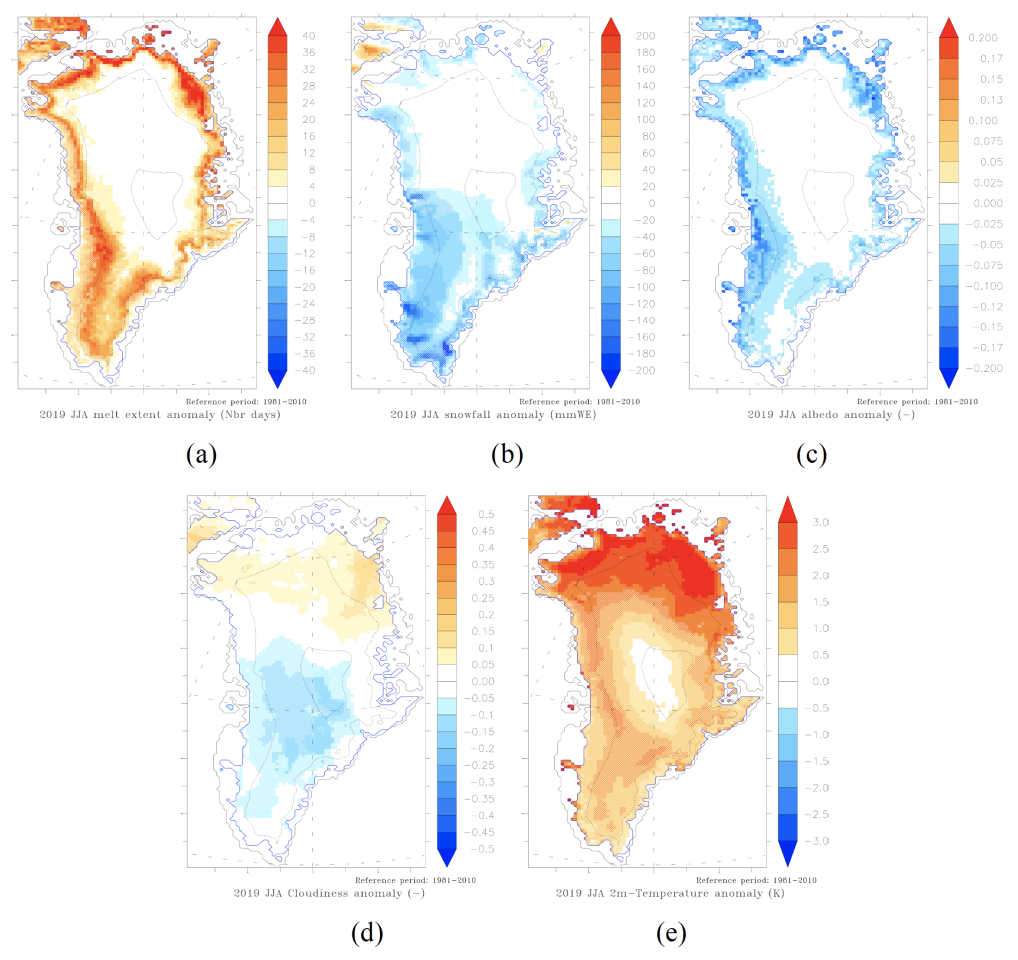A new study has calculated that the Greenland ice sheet lost hundreds of billions of tons of ice last year, marking the biggest drop in its ice mass since records began in 1948. And warm weather alone wasn’t to blame – the team found that unusual pressure patterns had the most devastating impact.
The study, led by researchers from Columbia University’s Lamont-Doherty Earth Observatory, analyzed summer changes in the Greenland ice sheet by examining satellite data, climate models, and measurements taken from the ground.
And the results weren’t pretty. Overall, the team estimated that as much as 600 billion tons of Greenland’s ice was lost in 2019. That means the ice sheet’s surface mass balance plunged about 320 billion tons below the annual average for 1981 to 2010.
When conditions are stable, natural ice loss is offset by gains from snowfall. But in this case, only 50 billion tons were gained in 2019, barely making a dent in the record-breaking loss.
The reason for this devastating year isn’t as clear-cut as just rising temperatures. The previous worst year on record was 2012, when ice mass dipped 310 billion tons below the average. But temperatures were warmer in 2012 than 2019, so the team figured there must be other factors at play.
On closer examination, the researchers discovered that high-pressure conditions lingered over Greenland for much longer than usual last year. This triggered several mechanisms that all added up to increased ice loss.
These conditions prevented clouds forming over southern Greenland, which let in more sunlight, melting more surface ice. At the same time, fewer clouds meant less snowfall so less ice was being replenished. Snow’s brightness also helps reflect some sunlight away, and without it more ice absorbed the heat, accelerating melting.
Other parts of the country didn’t fare much better. The high-pressure conditions over the south pulled warmer air into the north, where they formed more clouds. Unfortunately, these weren’t the snow-producing kind – instead, they just trapped heat and increased melting further.

Tedesco and Fettweis, 2019
The team says a similar pattern was likely at play in 2012, and with the climate continuing to change at such a rapid pace, these kinds of conditions are probably going to become the new normal.
Unfortunately, the researchers say that current climate models don’t account for this kind of mechanism. That means that future melting may be twice as bad as is currently predicted.
It looks like Greenland’s weird weather is just another symptom of climate change, which began making itself even more apparent in 2019. The year was one of the warmest on record, with July the individual hottest month humans have ever recorded. Ocean temperatures reached new heights, and Australia saw its hottest year ever, punctuated with devastating bushfires.
The new study was published in the journal The Cryosphere.
Source: Columbia University
Source of Article